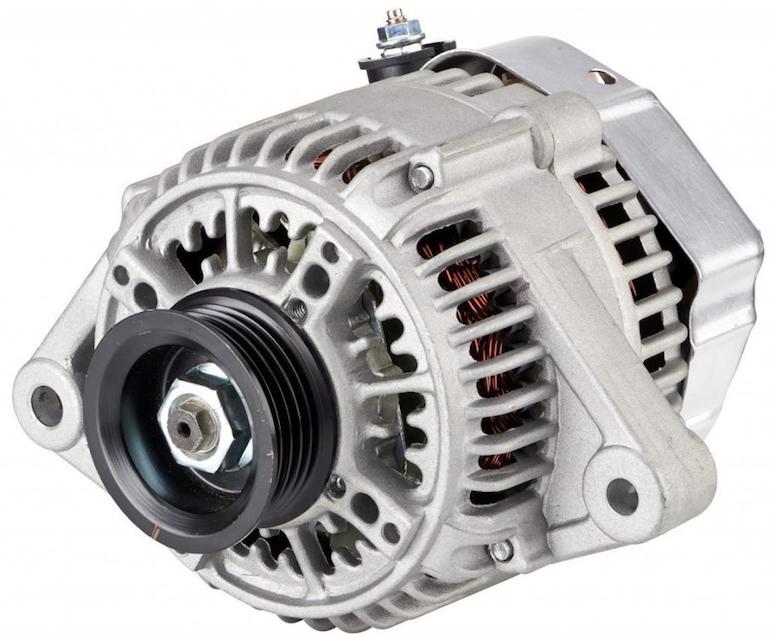
How to check the generator for operation at home?
One of the leading places in the list of common malfunctions of car systems is occupied by breakdowns of electrical equipment. The most important elements for ensuring the operation of electrical equipment are the battery and the generator, which work with each other in constant conjunction.
On our Vodi.su portal, we have repeatedly talked about the structure of the battery and the generator, about their breakdowns and diagnostic methods. In today's article, I would like to touch on a topic that has not yet been covered on our resource: how to check your car's generator for performance at home?

The most common generator breakdowns and their manifestation
The generator, in general terms, consists of electrical and mechanical parts. So, as we wrote earlier, the generator pulley is driven from the crankshaft by means of a timing belt. Accordingly, the pulley may fail over time, and most often it is the bearing that breaks. A sign of such a breakdown will be a squeak from the engine compartment, belt slip, and a voltage drop in the network.
The electrical part of the assembly consists of the following parts:
- rotor and stator;
- rectifier diodes;
- voltage regulator;
- brush assembly with graphite brushes that are in contact with the rotor rings;
- diode bridge.
Most often, car owners have to change the alternator brushes, which wear out. It is also necessary to monitor the integrity of the wires and contacts. Due to wear on the rotor shaft bearing and loose bracket fastenings, you may experience the rotor hitting the stator poles.
Symptoms of a breakdown in the electromechanical part can be the following phenomena:
- the alternator sends charging current to the battery, but the battery is not fully charged;
- constant flashing of the battery charging light;
- voltage reduction;
- headlights glow dimly;
- electrical shorts, etc.
It is clear that such obvious signs of malfunctions cannot be neglected. If measures are not taken in time, the consequences can be the most dire, up to the ignition of the wiring and turning your vehicle into a mountain of crumpled metal. We already wrote on Vodi.su about how to check the generator without removing it. Today we will talk about ways to check its performance at home.

Checking a dismantled generator
If your knowledge of electrical engineering is at the high school level, it is better to entrust this work to specialists.
The very first thing to check is brush wear. They can wear out both for natural reasons and due to the misalignment of the rotor shaft. For each car model, the instructions for the generator must indicate the minimum height of the brushes. If it is lower, then it is time to change the brushes. Any auto parts store sells sets of brushes with springs and slip rings.
An obligatory diagnostic step is to measure the stator, rotor and diode bridge windings with a multimeter. Switch the tester to ohmmeter mode and attach its probes to the outputs of each of the winding plates. The resistance level should be within 0,2 ohms. If it is higher or lower, then the winding must be replaced. The resistance between the common terminal of the stator assembly and one of the winding plates of a working device is around 0,3 Ohm.
Checking the rotor is much more difficult.
Diagnostic steps:
- we transfer the tester to the resistance measurement mode and measure it on the resistance winding of the rotor unit;
- if this parameter is in the range of 2,3-5 ohms, then everything is fine with the winding, there is no turn-to-turn closure or breakage of contacts;
- resistance below the specified value - there is a short circuit;
- resistance above 5 ohms - poor contact with the rings, winding breakage.
Put the tester into current diagnostic mode and apply 12 volts (or 24 if you are checking the truck's alternator) to the slip rings. Ideally, the excitation winding of the rotor consumes no more than 4,5 Amps and no less than three.
The problem may also lie in isolation. If the insulation resistance is within the normal range, then a conventional 40-watt incandescent lamp connected to the ring and to ground should not burn. If it glows dimly and blinks, then there are current leaks.

Recall that all these operations are carried out after the removal of the generator and its partial disassembly. The diode bridge can be checked both on the car and on the removed generator. The essence of the test is to measure the current strength when connecting the multimeter probes to the bridge terminals and ground. If the voltage is above 0,5 volts, and the current strength is above 0,5 milliamps, then one of two things: there are problems with the insulation, or it's time to change the diodes.
Many car owners in the garage can find a special additional probe - a clip that is put on the cable and check the recoil current. It is this parameter that is responsible for recharging the battery while the vehicle is moving. If this value is below the nominal values, then there is a problem with the generator or diode bridge.
Conclusions
As you can see, diagnosing a generator with improvised means is not an easy task. Without special equipment, the cause of the breakdown can only be determined by the “poke method”. Such problems are faced, first of all, by the owners of domestic vehicles produced in the 90s of the early XNUMXs.
If you have a recently purchased car, we would not recommend dealing with electrical faults on your own, as this will lead to a clear loss of warranty. Pay attention to the seals that are on the generator housing. You cannot damage them. It is much easier to submit a complaint to the store where you bought the device. If the generator is still under warranty, you should replace it if a factory defect is found.
Loading…
